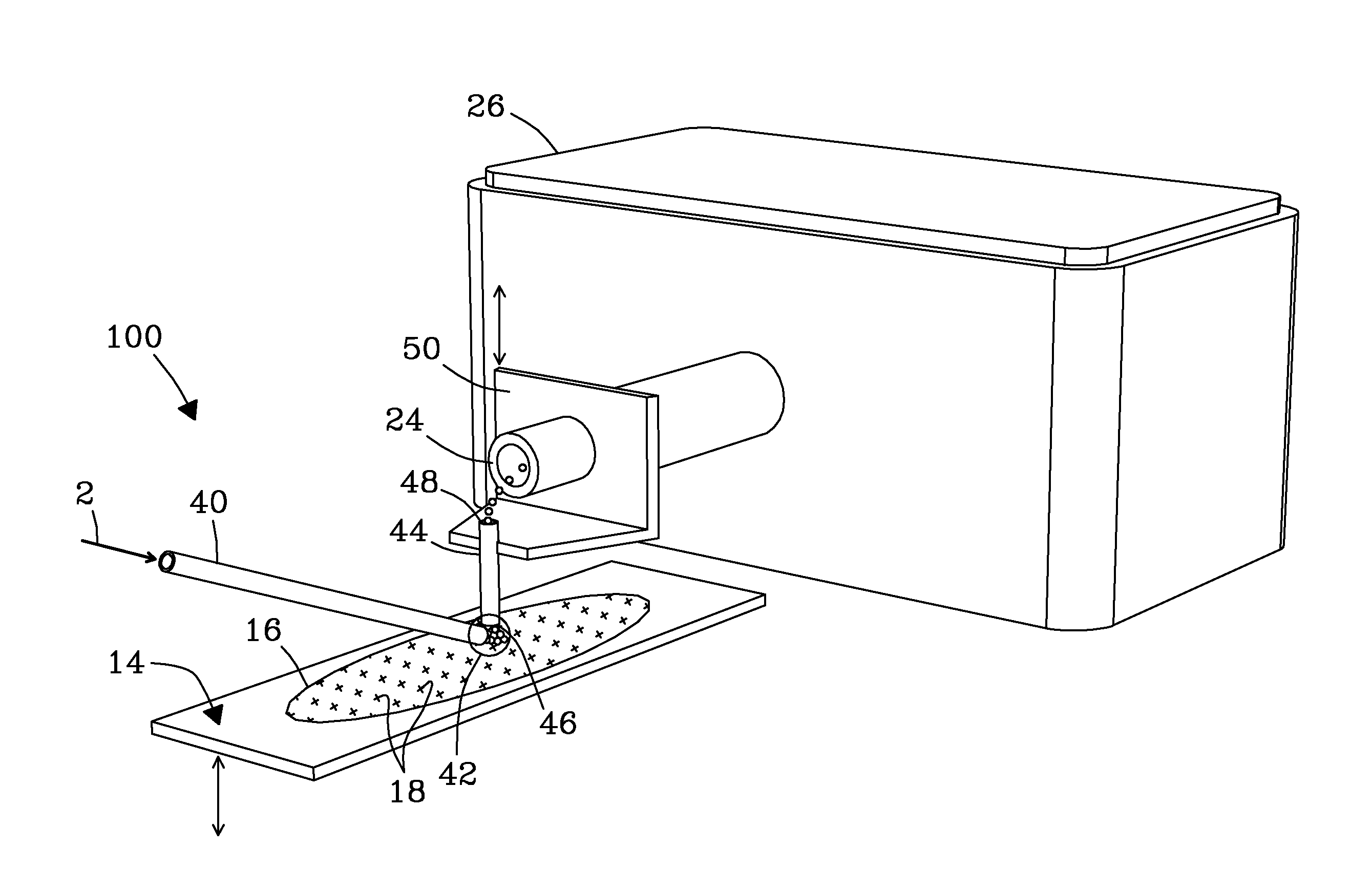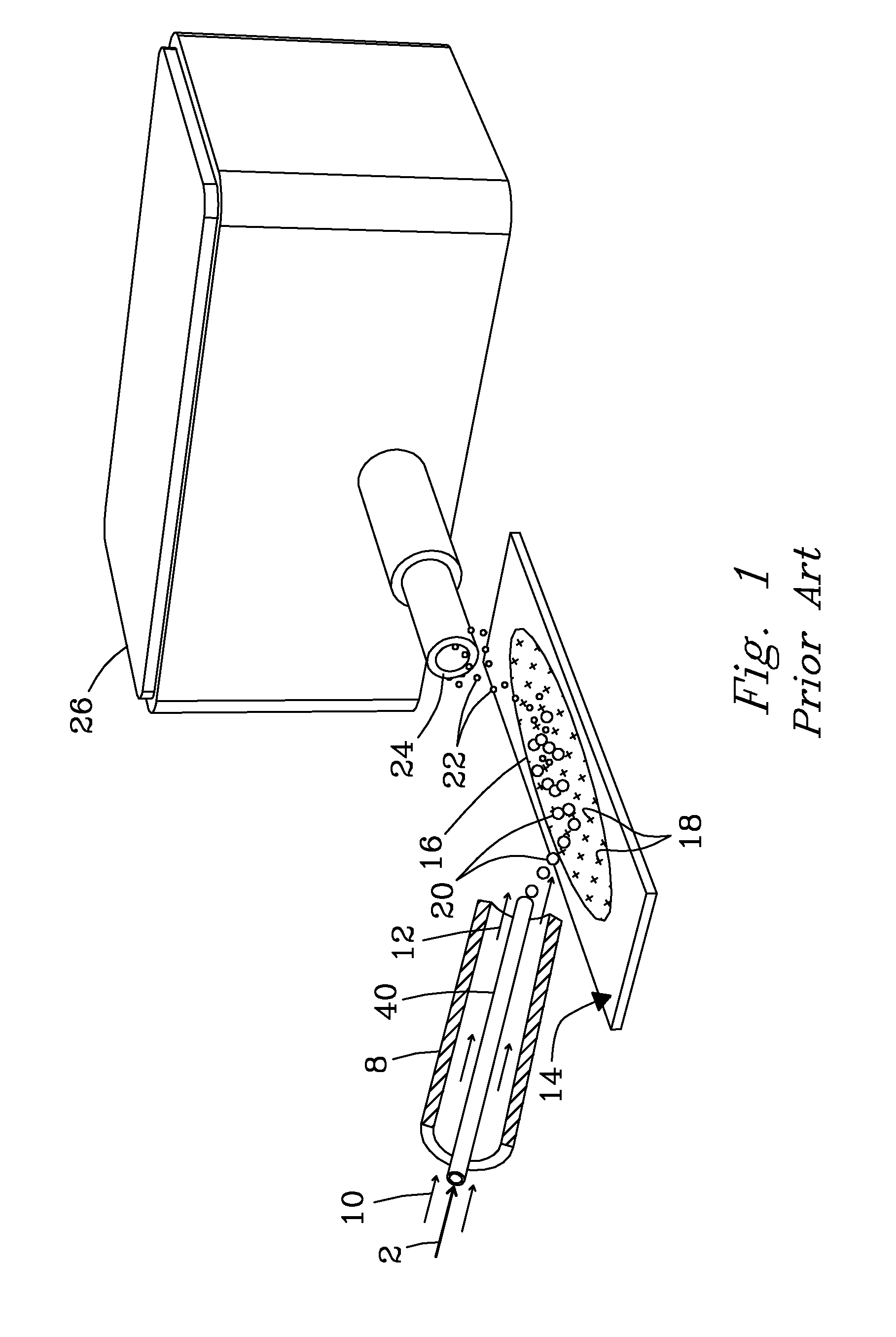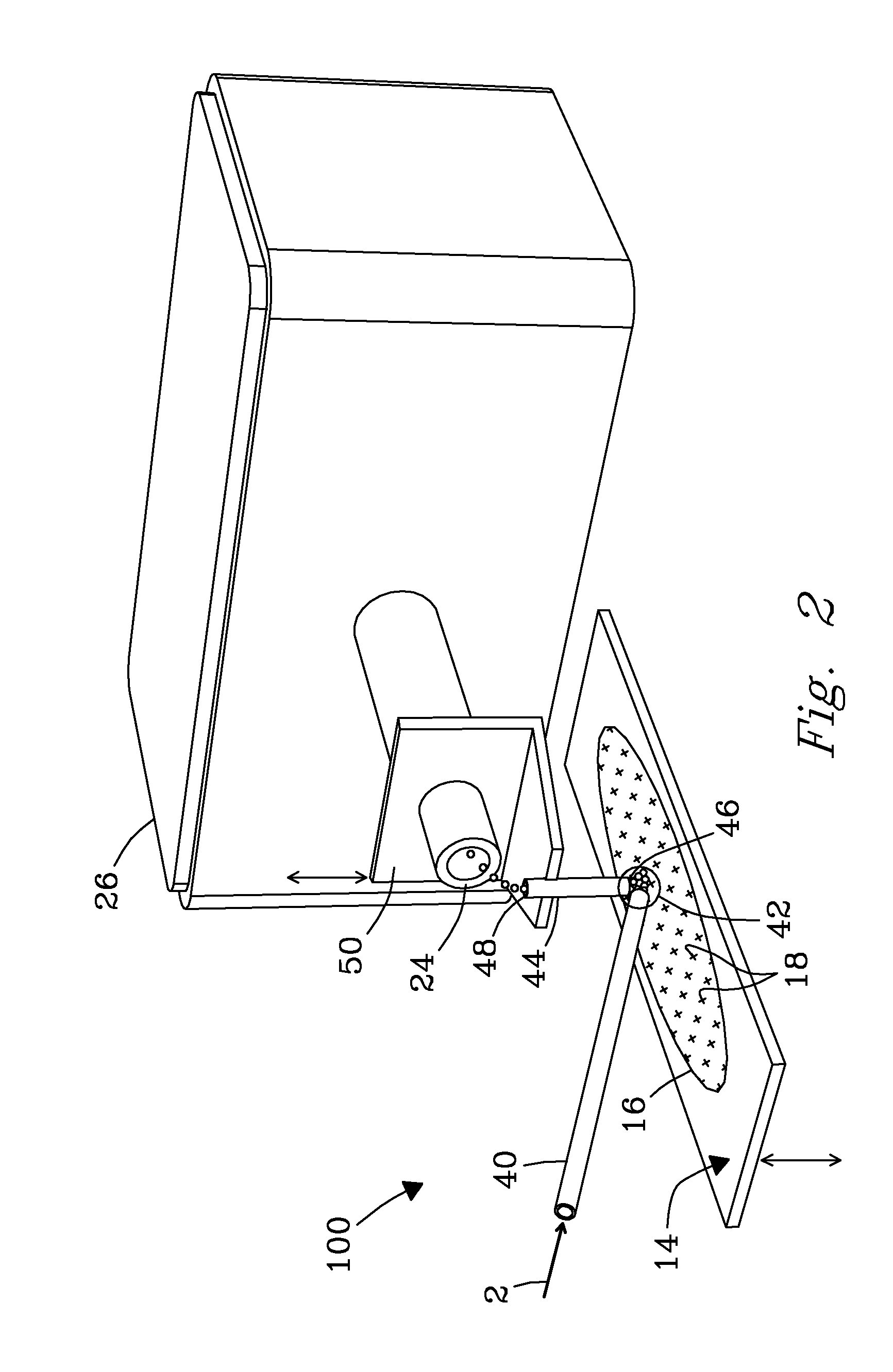Focused analyte spray emission apparatus and process for mass spectrometric analysis
a mass spectrometric analysis and analyte technology, applied in the field of electrostatic ionization systems and processes, can solve the problems of material loss, reduced detection limits, and reduced detection efficiency, and achieve the effect of greater resolution
- Summary
- Abstract
- Description
- Claims
- Application Information
AI Technical Summary
Benefits of technology
Problems solved by technology
Method used
Image
Examples
example 1
Sample Preparation for Analyses of Rhodamine, Reserpine, and Cytochrome-C
[0028]Experimental. Samples and Reagents. Water, methanol (both HPLC grade), glacial acetic acid, cytochrome-C (bovine heart) and reserpine (all from Fischer Scientific, Inc., Waltham, Mass., USA) were used in experiments in testing of the invention. Cytochrome-C was dissolved in a mixture of water, methanol, and acetic acid (50:48:2) to a concentration of 19 ng / μL. Reserpine was dissolved in a mixture of methanol and acetic acid (10:1) to a concentration of 0.7 ng / μL. A 2 μL aliquot of cytochrome-C solution and a 1 μL aliquot of reserpine solution were pipetted onto an Omnislide® hydrophobic array (Prosolia, Inc., Indianapolis, Ind., USA) and allowed to dry before analysis. A film of rhodamine dye from a red Sharpie® permanent marker (Sanford) was created on a plain microscope slide (Fischer Scientific) by coloring the slide and allowing the deposited rhodamine and reserpine dye films to dry. Methanol (rhodami...
PUM
 Login to View More
Login to View More Abstract
Description
Claims
Application Information
 Login to View More
Login to View More - R&D
- Intellectual Property
- Life Sciences
- Materials
- Tech Scout
- Unparalleled Data Quality
- Higher Quality Content
- 60% Fewer Hallucinations
Browse by: Latest US Patents, China's latest patents, Technical Efficacy Thesaurus, Application Domain, Technology Topic, Popular Technical Reports.
© 2025 PatSnap. All rights reserved.Legal|Privacy policy|Modern Slavery Act Transparency Statement|Sitemap|About US| Contact US: help@patsnap.com



